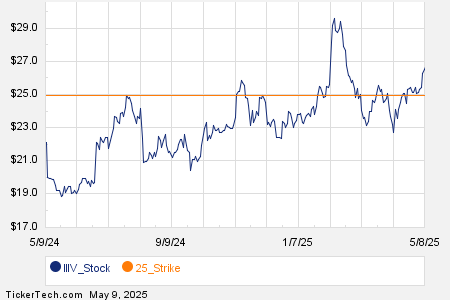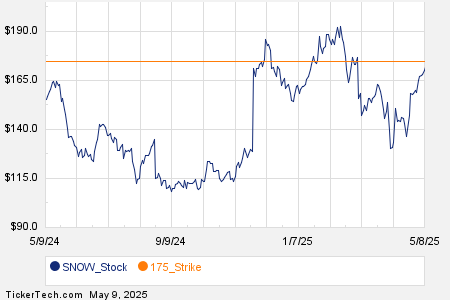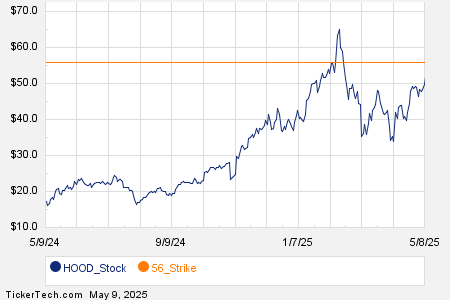AMD Faces Headwinds Amid Strong Q1 Performance and High Valuation
Advanced Micro Devices (NASDAQ:AMD) stock is currently priced around $99, appearing relatively expensive. Although strong opportunities exist, minor concerns may elevate the current valuation.
Q1 Results and Optimistic Outlook
Recently, AMD reported better-than-expected Q1 results, with a revenue increase of 36%, reaching $7.44 billion. Earnings per share stood at $0.96. This growth was largely driven by a 57% rise in data center sales, totaling $3.7 billion, thanks to increased GPU and CPU shipments. AMD’s CPUs have been gaining market share from Intel in the data center sector. While AMD’s GPU chips do not rival Nvidia’s in the high-end market, the AI boom—highlighted by models such as OpenAI’s GPT-4 and China’s DeepSeek R1—is expected to bolster broader GPU demand. AMD’s client segment also exhibited robust growth, with a 68% revenue increase to $2.3 billion. The company anticipates that new chips launching soon will further enhance sales in the latter half of the year.
Challenges Due to U.S.-China Relations
However, AMD faces challenges from U.S. restrictions on sales to China. The company expects these trade limitations will result in a $1.5 billion revenue loss this year, linked to restrictions on its MI308 chips. Furthermore, AMD anticipates a charge of up to $800 million related to inventory and purchase commitments due to these new controls. A license will be required to export advanced AI processors to China, and while AMD plans to apply for these licenses, the outcome is uncertain. This regulatory environment is problematic, given that China constitutes approximately 24% of AMD’s revenue.
Financial Analysis of AMD
Evaluating AMD’s performance through growth, profitability, financial stability, and resilience during downturns indicates a strong operating performance, albeit with a high valuation. For investors looking for upside with lower volatility, the Trefis High-Quality portfolio may offer a viable alternative, having significantly outperformed the S&P 500 since its inception.
Valuation Comparison with the S&P 500
In terms of valuation metrics, AMD appears quite expensive relative to the S&P 500:
- AMD’s price-to-sales (P/S) ratio stands at 6.0, while the S&P 500’s is 2.8.
- The price-to-free cash flow (P/FCF) ratio for AMD is 51.3 compared to 17.6 for the S&P 500.
- AMD’s price-to-earnings (P/E) ratio is 95.0, compared to a benchmark of 24.5.
Revenue Growth Over Recent Years
AMD has experienced notable revenue growth recently:
- The company’s revenues have increased at an average rate of 17.8% over the past three years, compared to 6.2% for the S&P 500.
- In the last 12 months, revenues grew 13.7% from $23 billion to $26 billion, against a 5.3% increase for the S&P 500.
- Quarterly revenues rose by 24.2% to $7.7 billion from $6.2 billion a year ago, surpassing the S&P 500’s 4.9% growth.
Profitability Metrics
Profit margins for AMD lag behind many peers:
- The company’s operating income over the past four quarters was $2.1 billion, translating to an operating margin of 8.1%, lower than the S&P 500’s 13.1%.
- Operating cash flow (OCF) during this period was $3.0 billion, indicating an OCF margin of 11.8%, compared to 15.7% for the S&P 500.
- Net income for the last four quarters stood at $1.6 billion, reflecting a net income margin of 6.4%, below the S&P’s 11.3%.
Financial Stability Assessment
AMD presents a stable financial profile:
- Debt amounted to $2.2 billion at the end of the latest quarter, while the company’s market capitalization was $160 billion as of May 6, 2025. This leads to a strong debt-to-equity ratio of 1.4%, significantly lower than the S&P 500 average of 21.5%.
- Total assets were valued at $69 billion, with cash and cash equivalents accounting for $5.1 billion, yielding a cash-to-assets ratio of 7.4%, below the S&P average of 15.0%.
Downturn Resilience
AMD has historically performed poorly compared to the S&P 500 during downturns:
- During the inflation shock in 2022, AMD stock plummeted 65.4% from its high of $161.91 on November 29, 2021, to a low of $55.94 on October 14, 2022. The S&P 500 fell only 25.4% during the same period.
- The AMD stock fully recovered by January 18, 2024, and peaked at $211.38 on March 7, 2024, before settling around $99.
- In the COVID pandemic of 2020, AMD stock dropped 34.3% from $58.90 on February 19, 2020, to $38.71 on March 16, 2020, while the S&P 500 declined 33.9%. AMD regained its pre-crisis peak by July 22, 2020.
- During the global financial crisis of 2008, AMD stock fell 91.2% from $20.35 on January 1, 2007, to $1.80 on November 25, 2008, while the S&P 500 dropped 56.8%. AMD took until August 21, 2018, to recover its pre-crisis high.
Conclusion: Assessment of AMD Stock
In summary, AMD’s performance can be categorized as follows:
- Growth: Extremely Strong
- Profitability: Very Weak
- Financial Stability: Very Strong
- Downturn Resilience: Very Weak
- Overall: Neutral
Despite its strong growth prospects, AMD’s high valuation renders it an expensive investment, limiting its immediate upside potential. For those interested in a more stable option, the Trefis Reinforced Value (RV) Portfolio has outperformed its all-cap stocks benchmark, providing strong returns for investors.
The views and opinions expressed herein are those of the author and do not necessarily reflect those of Nasdaq, Inc.



